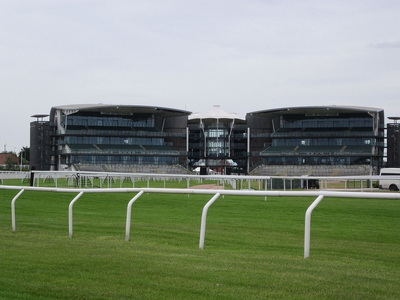
After a cracking Cheltenham Festival and ahead of the new flat racing season, we have one of the greatest sporting events of the year: the Grand National.
The Grand National is widely regarded as one of the biggest and best races in the world. The race itself attracts a worldwide audience of over 600 million, which in itself is virtually unrivalled. But, the race is a part of a bigger meeting in the Grand National meeting, which is often overlooked due to scale of the single main event.
The venue for the meeting is Aintree Racecourse, which is in Liverpool, England. The fixture lasts for three days, starting on the Thursday and concluding on the Saturday, with the feature racing taking place on the final day. The National has been run since 1839 and is now an integral part of the British sporting calendar, attracting a mass of horse racing fans and also people who aren’t usually interested in the sport.
- In This Article:
- Major Races
- Grand National
- Aintree Festival
- Welfare
- History
Grand National Festival Major Races
Look beyond the big race itself at Aintree and you will find a top class National Hunt meeting that is packed full of great races that will get the pulses racing and hopefully the wallets bulging. Here we run through all the biggest races to watch and bet on during the three day Grand National meeting.
| Day | Race | Grade / Length | Last Winner |
|---|---|---|---|
| Thursday | Anniversary 4-Y-O Juvenile Hurdle | Grade 1 / 2m 1f | Sir Gino (2024) |
| Thursday | Manifesto Novices' Chase | Grade 1 / 2m 4f | Il Etait Temps (2024) |
| Thursday | Aintree Hurdle | Grade 1 / 2m 4f | Impaire Et Passe (2024) |
| Thursday | Aintree Bowl Chase | Grade 1 / 3m 1f | Gerri Colombe (2024) |
| Friday | Sefton Novices' Hurdle | Grade 1 / 3m ½f | Dancing City (2024) |
| Friday | Mildmay Novices' Chase | Grade 1 / 3m 1f | Inothewayurthinkin (2024) |
| Friday | Top Novices' Hurdle | Grade 1 / 2m ½f | Mystical Power (2024) |
| Friday | Melling Chase | Grade 1 / 2m 4f | Jonbon (2024) |
| Friday | Topham Handicap Chase | Premier Handicap / 2m 5f | Arizona Cardinal (2024) |
| Saturday | Maghull Novices' Chase | Grade 1 / 2m | Found A Fifty (2024) |
| Saturday | Mersey Novices' Hurdle | Grade 1 / 2m 4f | Brighterdaysahead (2024) |
| Saturday | Liverpool Hurdle | Grade 1 / 3m ½f | Strong Leader (2024) |
| Saturday | Grand National | Premier Handicap / 4m 2½f | I Am Maximus (2024) |
About the Grand National
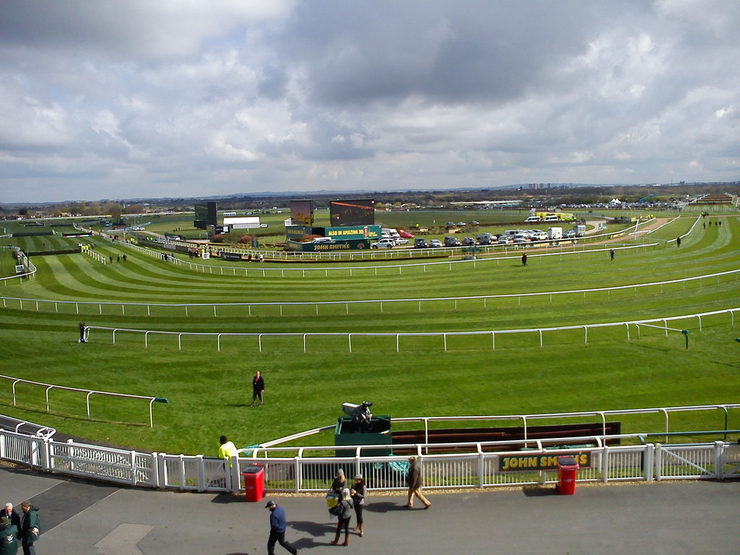
The course has almost become a celebrity in its own right, with many punters recognising the name of fences and sections of the track that are being navigated at any one time. It’s a gruelling course that they have to run at over 4 miles 2½ furlongs, making it the longest National Hunt race in the UK.
Whilst the length of the race is monstrous, even in steeplechasing terms, it’s the 30 times that horses are asked to jump over fences that really sorts the wheat from the chaff. In total, there are actually only 16 fences, with the first 14 of these fences being jumped twice throughout the race.
An interesting fact about the race is that for many years it was run over 4 miles 856 yards, but from 2013 the start was actually moved forward 90 yards in order to keep the start away from the grandstand and thousands of punters. It was decided that this would make it easier to first of all calm the horses before the race, but also for the jockeys to hear instructions from the starters about when the race would start. On top of that, after the horses have jumped over the final fence, the run in to home is one of the longest in the game, measuring a massive 494 yards.
When the race first started in 1839 and even for many years after, to accommodate the size of the race and length of the track, the majority of the race wasn’t actually run on the main racecourse. Instead, they would have to navigate the cross-country style, with markers and posts signifying where they need to run. The canal that runs adjacent to the course was used a reference point for the track, before then re-entering the course for the final section.
Today, the cross-country section is now part of Aintree racecourse, but many of the old-school commentators and people within the industry still refer to sections of the course as “the country”.
Handicapping
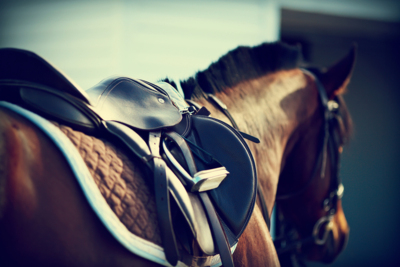
Handicapping plays a major role in all horse racing, but probably more so in the Grand National than any other. The bottom line is that all horses must be at 10 stone or above. So, even if they were weighed in at 9st 5lb, they would still be given the extra weight to make the minimum. The maximum weight is 11st 12lbs.
It’s the role of the handicapper (in the case of the Grand National it is Phil Smith) to try and make the race as fair a fight as possible. This means that he needs to take into consideration a horses form, the ground, previous performances on that track and other factors. By doing this he then adds weight to certain horses to try and make it as even as possible. Whilst impossible, his goal is to make it so all horses cross the line at the same time, just to give you an idea of what he’s trying to achieve.
The race is now limited to 34 entrants, but in reality, there are hundreds of horses that might have been put forward to race each year. The application process starts around two months prior to the start of the race in February. A process that’s called ‘scratching’ occurs in the weeks leading up, which basically means the organisers or even trainers decide to remove horses from the running.
As the race gets nearer, the handicapping committee will start to step in and look at a number of key factors shown in the list below.
Grand National Racehorse Entry Criteria
- Age: Horses must be aged 7 or older
- Form: Three or more recognised chase runs with a top four finish in a 3 mile+ chase
- Rating: Must be rated at 130 or higher by the British Horseracing Authority
These guidelines are mainly in place for the safety of the horses and to prevent novice horses from partaking in what is essentially the toughest race in the world. But, even if horses do meet these guidelines, there is still no guarantee that they will gain entry, with the handicapper having the final say in who will make the final 34.
You may also find that the race starts with fewer entrants than the 34 advertised. This is usually down to horses pulling out in the days or even hours before a race, usually down to injury or not suiting the current going for the day.
The final declaration for the race will be held two days prior to the start of the race. This is why that in the days or weeks leading up to the race you may see betting markets with more than 34 horses to choose from as basically it hasn’t been finalised who will be running.
The Fences
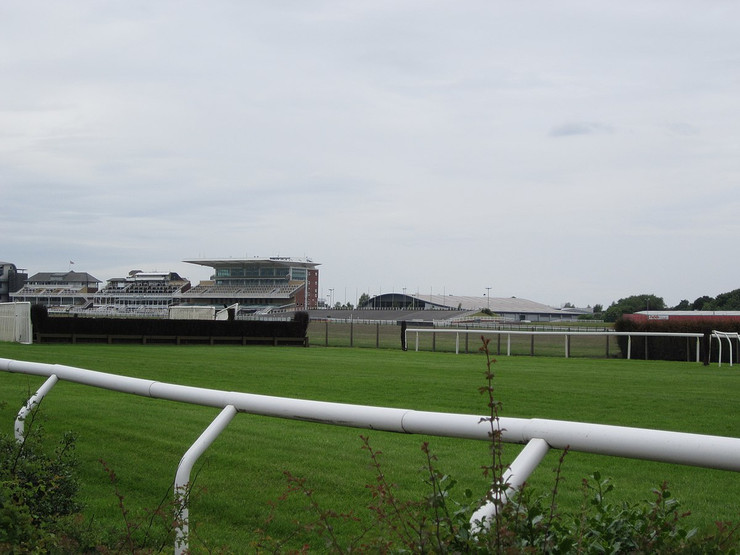
Over the 180+ years that the Grand National has been running, there are many famous aspects to the race that people remember, but few are as iconic as their fences. There are very few races, if any, that non horseracing fans would be able to name famous horses, let alone famous fences, but that’s why the Grand National is so special.
From the 16 fences that they need to navigate and the 30 jumps in total that the horses need to make, there are no easy obstacles. The horses and jockeys need to be at their limits for each, which is why it’s one of the greatest achievements in sport to win this race. The only two fences that are jumped just once in the race are The Chair and the Water Jump.
Below is a table of all the fences and the order in which they are jumped:
The Grand National Fences – Key Information
| Number | Height | Details |
|---|---|---|
| 1 & 17 | 4ft 6in | The first jump of the gruelling course. Whilst not a particularly large fence in the grand scheme of the National, the fact that 34 horses reach it within a few seconds of each other makes it one of the most exciting. Often bookies will run markets about how many fallers there will be here |
| 2 & 18 | 3ft 6in | One of the unnamed fences, this smaller jump gives respite for the horses |
| 3 & 19 | 4ft 10in | Westhead: The first of the ditches and a huge test for the horses with a 6ft drop on the other side |
| 4 & 20 | 4ft 10in | Ironically called a plain fence, for a long this time stood as the tallest on the course. A reduction of 2in was made in 2012 but it is still widely regarded as one of the toughest on the track |
| 5 & 21 | 5ft | One of the biggest on the course, also has a span 3ft 6in wide, making for a daunting jump |
| 6 & 22 | 4ft 10in | Becher’s Brook: There are few more famous fences in the horse racing world than Becher’s Brook. Under 5ft from the racing side the fence but a drop of 6ft 9in follows. There’s also a water beck and the fact it’s on a left-hand turn all combine to make this one of the hardest jumps. Simply navigating this twice in the race is as tough a test as you will find |
| 7 & 23 | 4ft 6in | Foinavon: Made famous in 1967 when Foinavon became the only horse to make the jump, going on to win the race. This otherwise innocuous fence is one of the smallest on the track |
| 8 & 24 | 5ft | Canal Turn: Another brute of a fence with the horse having to navigate the canal directly after it by making an immediate 90 degree turn. A real make or break jump |
| 9 & 25 | 5ft | Valentine’s Brook: One of the highest fences on the course and coming in quick succession to Canal Turn. A tricky series of fences to navigate |
| 10 & 26 | 5ft | A straightforward if substantial fence |
| 11 & 27 | 5ft | Booth: The horses must clear a 6ft wide ditch prior to take off and also get over the high fence |
| 12 & 28 | 5ft | Another brute, similar to Booth, except this time the ditch is on the landing side totally blind to the horse |
| 13 & 29 | 4ft 7in | The penultimate fence on the final lap, actually fairly innocuous considering what’s gone on before. After almost 4 miles of racing though, it’s tough enough |
| 14 & 30 | 4ft 6in | Very similar layout and style to the previous fence |
| 15 | 5ft 2in | The Chair: The tallest jump on the course, horses clear a 6ft ditch, actually landing about 6 inches higher than take off, often throwing them a little |
| 16 | 2ft 9 in | The Water Jump: Runners go from the largest to the smallest fence. This obstacle is pretty straightforward for the horses but does include a 10ft water splash at the other side which measures 15cm deep |
How to Pick a Horse: Essential Facts & Statistics

Probably the horse most synonymous with the Grand National, and the only one to have won the race three times, is Red Rum. His last victory was back in 1977 and for a long time that was the last winner the horse’s legendary trainer Ginger McCain had in the race.
But, in 2004 he was back, this time with 16/1 Amberleigh House. After what was a pretty chaotic race, Amberleigh House, ridden by Graham Lee, managed to overtake Clan Royal on the run in to win one of the most welcomed in Grand Nationals history. It allowed McCain to equal the record of most wins, with four to his name.
Most Successful Grand National Trainers
| Wins | Trainer | Winners |
|---|---|---|
| 4 | Ginger McCain | Red Rum (1973, 1974, 1977), Amberleigh House (2004) |
| 4 | Fred Rimell | E.S.B. (1956), Nicolaus Silver (1961), Gay Trip (1970), Rag Trade (1976) |
| 4 | George Dockeray | Lottery (1839), Jerry (1840), Gaylad (1842), Miss Mowbray (1852) |
| 3 | Gordon Elliot | Silver Birch (2007), Tiger Roll (2018, 2019) |
| 3 | Tom Forster | Well To Do (1972), Ben Nevis (1980), Last Suspect (1985) |
| 3 | Neville Crump | Sheila’s Cottage (1948), Teal (1952), Merryman II (1960) |
| 3 | Vincent O’Brien | Early Mist (1953), Royal Tan (1954), Quare Times (1955) |
| 3 | Tom Coulthwaite | Eremon (1907), Jenkinstown (1910), Grakle (1931) |
| 3 | Aubrey Hastings | Ascetic’s Silver (1906), Ally Sloper (1915), Master Robert (1924) |
| 3 | Willie Moore | Why Not (1894), The Soarer (1896), Manifesto (1899) |
Favourites
The 2024 Grand National was the 176th running of the famous race, of which only 30 times has the favourite or joint favourite come out on top. This is a fairly low number, but when you consider the reasons why, it does make sense.
The main thing to consider is that of the number of runners for the race. With 34 in the field (40 prior to 2024) it’s a bit of a minefield. Plus, given how tough the course is, just getting around is an achievement in itself.
The favourite for the race usually goes off at around 10/1, although they have been as low as 11/4 and as high as 20/1. In 2019 the favourite Tiger Roll won after starting at just 4/1. The shortest priced winner ever came back in 1919 when Poethlyn won the race at odds of 11/4. These days it’s unlikely that we will ever see odds as short as this given the popularity and size of the race. The table below shows the favourites since 1990 and their finishing positions:
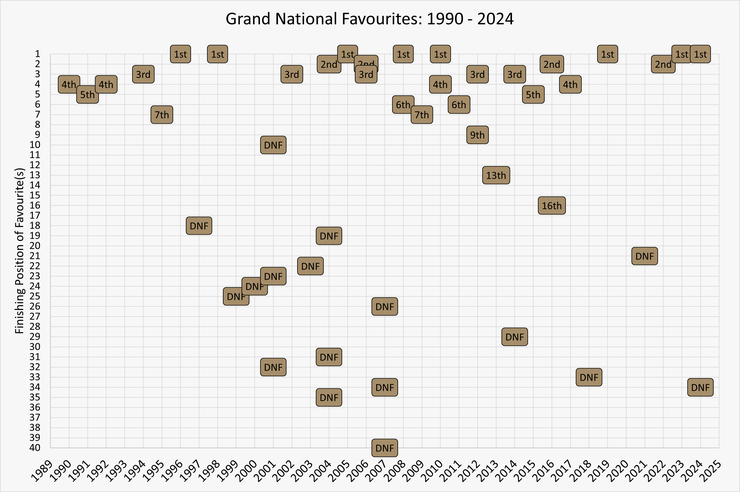
Long Shots
Due to the massive field size and competitive nature of the race, it’s not uncommon to see some real long priced winners of the race. The longest Starting Price that’s ever been recorded with the Grand National is that of 100/1, coming from five horses, who are Mon Mome, Foinavon, Caughoo, Greglach and Tipperary Tim. There have also been plenty of winners priced around the 66/1 and 50/1 mark.
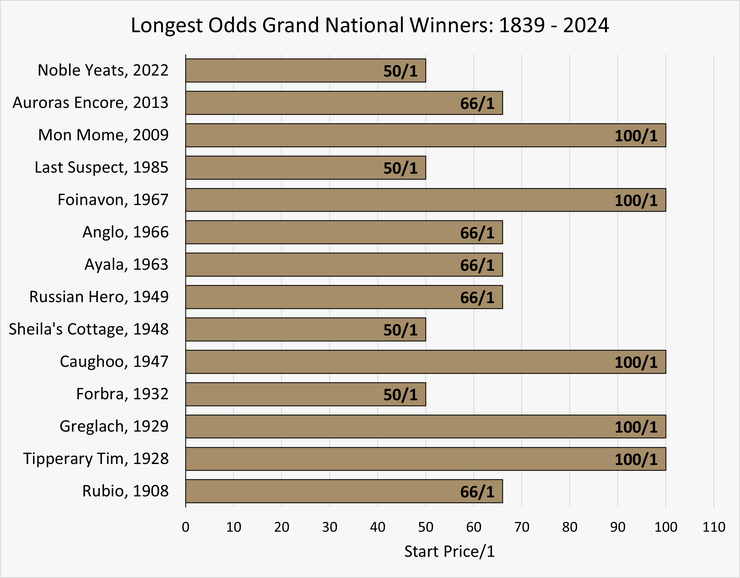
Grey Horses
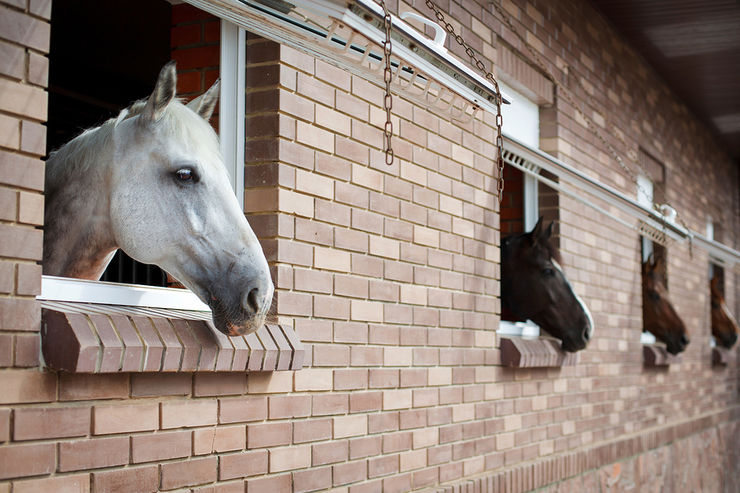
The hoodoo over the grey horse is one that has been running since the start of the Grand National. The first grey horse didn’t actually win the race until 1868, when The Lamb won some 29 years after the first running of National. It has to be mentioned that the horse also went on to repeat the victory three years later in 1871.
Only two other winners of the National have since been grey horses; Nicolaus Silver in 1961 and most recently Neptune Collognes in 2012.
Recent Winners
It’s fair to say that winning the Grand National is a momentous sporting achievement in any year but a number of recent runnings have been particularly newsworthy.
Grand National Winners: 2009 – 2024
| Date | Winner (Odds) | Trainer | Jockey |
|---|---|---|---|
| 13th April 2024 | I Am Maximus (7/1JF) | Willie Mullins | Paul Townend |
| 15th April 2023 | Corach Rambler (8/1F) | Lucinda Russell | Derek Fox |
| 9th April 2022 | Noble Yeats (50/1) | Emmet Mullins | Sam Waley-Cohen |
| 10th April 2021 | Minella Times (11/1) | Henry de Bromhead | Rachael Blackmore |
| 4th April 2020 | No race | – | – |
| 6th April 2019 | Tiger Roll (4/1F) | Gordon Elliott | Davy Russell |
| 14th April 2018 | Tiger Roll (10/1) | Gordon Elliott | Davy Russell |
| 8th April 2017 | One For Arthur (14/1) | Lucinda Russell | Derek Fox |
| 9th April 2016 | Rule The World (33/1) | Mouse Morris | David Mullins |
| 11th April 2015 | Many Clouds (25/1) | Oliver Sherwood | Leighton Aspell |
| 5th April 2014 | Pineau De Re (25/1) | Richard Newland | Leighton Aspell |
| 6th April 2013 | Auroras Encore (66/1) | Sue Smith | Ryan Mania |
| 14th April 2012 | Neptune Collonges (33/1) | Paul Nicholls | Daryl Jacob |
| 9th April 2011 | Ballabriggs (14/1) | Donald McCain Jr. | Jason Maguire |
| 10th April 2010 | Don’t Push It (10/1JF) | Jonjo O’Neill | Tony McCoy |
| 4th April 2009 | Mon Mome (100/1) | Venetia Williams | Liam Treadwell |
I Am Maximus: 2024
The strength of trainer Willie Mullins was evident in the betting for the 2024 National, with I Am Maximus starting as 7/1 joint favourite, one of eight runners for the Closutton based trainer. I Am Maximus jumped the last fence in sixth place and despite being forced to switch right behind Minella Indo and Delta Work at the Elbow, the JP McManus horse powered to the line, winning by 7½ lengths.
Corach Rambler: 2023
Corach Rambler was popular in the betting for the 2023 Grand National, setting off as the 8/1 favourite. Trainer Lucinda Russell and jockey Derek Fox had already been victorious in the race when winning with One For Arthur in 2017. An expertly timed ride saw Corach Rambler take the lead at the last fence to win comfortably by just over two lengths.
Noble Yeats: 2022
Winning the world’s most famous steeplechase isn’t a bad way to sign-off on your racing career and that’s exactly what Sam Waley-Cohen did in 2022. Riding Noble Yeats, owned by Sam’s father Robert Waley-Cohen who purchased the gelding just weeks before the race, the former Gold Cup winner became the first amateur jockey to win the Grand National in over 30 years.
Minella Times: 2021
The history books will forever say that in 2021 Rachael Blackmore became the first female jockey to win the Grand National, riding the Henry de Bromhead runner Minella Times to a 6½ length victory for owner JP McManus. After consistently riding at the highest level, Blackmore was already considered to be one the best National Hunt jockeys around but the Grand National catapulted the Irish rider into the limelight.
Tiger Roll: 2018 & 2019
Having already won a number of big races including the Triumph Hurdle and Cross Country Chase at Cheltenham, Tiger Roll was a popular winner of the National in 2018. It was in 2019 that he cemented his legendary status though when becoming the first back-to-back winner of the race since the great Red Rum. At 4/1, he was also the shortest priced winner since Poethlyn in 1919.
One For Arthur: 2017
Lucinda Russell’s One For Arthur would have been particularly welcome with punters north of the border as he became only the second Scottish trained winner of the race after John Leadbetter’s Rubstic in 1979. One For Arthur even carried the colours of the Scottish Saltire for owners Deborah Thomson and Belinda McClung who are known as the Two Golf Widows.
Rule The World: 2016
The silks of the Gigginstown House Stud have crossed the winning line in many of the UK and Ireland’s biggest National Hunt contests but their first win in the Aintree Grand National came in 2016 with Rule The World for trainer Mouse Morris and jockey David Mullins.
Many Clouds: 2015
With Many Clouds, owner Trevor Hemmings joined a select group in 2015 by winning his third Grand National. Jockey Leighton Aspell became the first jockey to win successive Nationals since Brian Fletcher’s double with Red Rum in 1973 and 1974. At 11st 9lbs this was also the most weight carried by the winner since Red Rum’s second triumph when saddling 12 stone.
Pineau De Re: 2014
France has a rich history in jumps racing and in 2014 Pineau De Re became the sixth horse bred across the channel to win a Grand National. Pinaeau De Re showed little to suggest that he was potential winner of the race during an injury-hit early career but a 23 length success in Downpatrick’s Ulster Grand National convinced John Proven to purchase the gelding and have a tilt at the big one. The rest as they say is history.
Auroras Encore: 2013
There have been some big-priced winners of the Grand National over the years but not many will see a better return than the 66/1 of Sue Smith’s Auroras Encore when winning the 2013 race. This was jockey Ryan Mania’s first ever Grand National ride but none of this inexperience showed as the Scottish jockey rode out a nine length victory.
Neptune Collonges: 2012
Grey horses are always a popular pick in the Grand National but before Neptune Collonges’ 2012 victory, only two grey horses had ever one the big race at Aintree. Paul Nicholls is one of the most successful National Hunt trainers but to date, this has been his one and only win in the Grand National.
Ballabriggs: 2011
Seven years after his father, Donald ‘Ginger’ McCain, trained his fourth Grand National winner, Donald McCain Jnr saddled his first with Ballabriggs. At just over 9 minutes, this was also one of the quickest run Grand Nationals in the race’s history.
Don’t Push It: 2010
Legendary jockey Anthony ‘AP’ McCoy finally got his first Grand National win at the fifteenth time of asking in 2011 onboard Don’t Push It. It was the one race that McCoy had desperately wanted to win, but had never been able to. The nation got behind him to see his 10/1 joint favourite, trained by Jonjo O’Neill romp home.
Mon Mome: 2009
The 2009 Grand National would see a huge upset on the cards, with 100/1 outsider Mon Mome winning the race. Ventia Williams’ horse was the longest priced winner for 42 years, taking the race by 12 lengths in what were considered to be tough conditions under a supreme ride by the late Liam Treadwell.
About the Grand National Festival
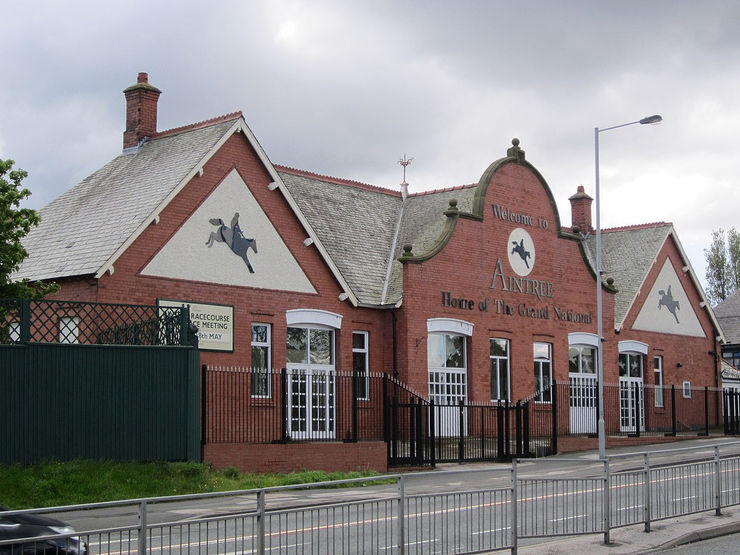
Whilst the Grand National definitely takes the limelight, the Aintree Festival, for which the Grand National is essentially a part of, has a high calibre of racing over its three days in its own right. Throughout all three days (Thursday to Saturday) there are seven races to view each day, with a total of 10 Grade 1 races in that period.
Day 1: Opening Day (2024)
| Time | Race | Grade | Length |
|---|---|---|---|
| 13:45 | Manifesto Novices’ Chase | Grade 1 | 2m 4f |
| 14:20 | Anniversary 4YO Juvenile Hurdle | Grade 1 | 2m 1f |
| 14:55 | Aintree Bowl | Grade 1 | 3m 1f |
| 15:30 | Aintree Hurdle | Grade 1 | 2m 4f |
| 16:05 | Foxhunters’ Open Hunters’ Chase | Class 2 | 2m 5f |
| 16:40 | Red Rum Handicap Chase | Premier Handicap | 2m |
| 17:15 | Mares’ National Hunt Flat Race | Grade 2 | 2m 1f |
The Thursday plays apart to four of those Grade 1 races, with one of the most competitive line ups of the entire jump season. The highlight of the day comes in the form of the Aintree Hurdle, which has an impressive prize pool of £250,000 with over £140,000 of that money going to the winner.
Some huge names have won it previously including Jezki, Oscar Whiskey, Al Eile, Morley Street and Daring Run, to name but a few. Since the race began in 1976 it’s been Ruby Walsh who is the most successful jockey with five wins to his name. The leading trainers are Toby Balding and Nicky Henderson who also have five wins each. Four of Balding’s winners came with Morley Street throughout the early nineties.
The other Grade 1 races on that day are the Aintree Bowl, Anniversary 4-Y-O Novices Hurdle and the Manifesto Novices’ Chase.
Day 2: Ladies Day (2024)
| Time | Race | Grade | Length |
|---|---|---|---|
| 13:45 | Mildmay Novices’ Chase | Grade 1 | 3m 1f |
| 14:20 | Handicap Hurdle | Premier Handicap | 2m 4f |
| 14:55 | Top Novices’ Hurdle | Grade 1 | 2m ½f |
| 15:30 | Melling Chase | Grade 1 | 2m 4f |
| 16:05 | Topham Handicap Chase | Premier Handicap | 2m 5f |
| 16:40 | Sefton Novices’ Hurdle | Grade 1 | 3m ½f |
| 17:15 | Handicap Hurdle | Class 2 | 2m ½f |
The most glamorous of the three days and one where people are encouraged to turn out in their Sunday best is that of Ladies Day. With three Grade 1 races to choose from, it’s the Melling Chase that catches the eye on the Friday, with a prize pool of £250,000 and the winner picking up around £140,000 for their troubles.
The Melling Chase is a race that has seen some of the best horses over fences win it, with champions including the likes of Don Cossack, Albertas Run, Master Minded, Moscow Flyer and Viking Flagship. Barry Geraghty is the most successful jockey in the race with four wins. The leading trainers are Nicky Henderson and Paul Nicholls with three each. Six horses have won the race twice, they are Viking Flagship, Direct Route, Native Upmanship, Moscow Flyer, Voy Por Ustedes and Fakir D’oudairies.
The other Grade 1 races on Ladies Day are the Top Novices’ Hurdle, Mildmay Novices’ Chase and the Sefton Novices’ Hurdle.
Day 3: Grand National Day (2024)
| Time | Race | Grade | Length |
|---|---|---|---|
| 13:20 | Handicap Hurdle | Premier Handicap | 3m ½f |
| 13:55 | Mersey Novices’ Hurdle | Grade 1 | 2m 4f |
| 14:30 | Freebooter Handicap Chase | Premier Handicap | 3m 1f |
| 15:05 | Liverpool Hurdle | Grade 1 | 3m ½f |
| 16:00 | Grand National Handicap Chase | Premier Handicap | 4m 2½f |
| 17:00 | Maghull Novices’ Chase | Grade 1 | 2m |
| 18:20 | Standard Open National Hunt Flat Race | Grade 2 | 2m 1f |
The Grand National Day isn’t just the biggest day of the meeting, but one of the biggest days in horse racing. The main even is obviously the Grand National itself, pulling in over 600 million viewers worldwide. The race has a massive prize pool of £1,000,000, paying out £500,000 to the winner.
Aside from the main event, there are also three Grade 1 races that day, with the pick of the bunch coming in the form of the Liverpool Hurdle. The race has a prize pool of £250,000 with over £140,000 of that going to the winner. Since its first race in 1974, there have been some standout names that include Big Buck’s, Mighty Man, Thistlecrack, Sweet Duke and Shell Burst.
Big Buck’s has been the Liverpool Hurdle’s most successful horse, with four wins to his name, and the most successful jockey is Peter Scudamore with five wins. Martin Pipe had five wins as trainer, from 1992 up to 2003.
Horse Welfare
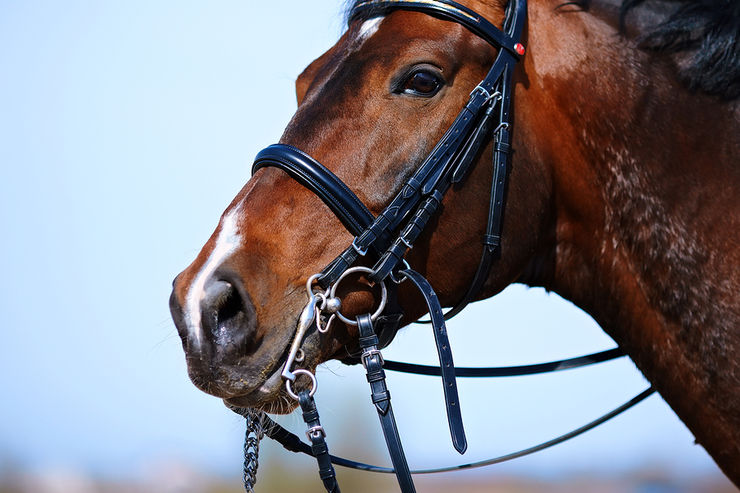
For all the good the Grand National has done for the profile of horseracing, the race itself is actually one that is quite controversial and one that comes under a lot of fire from activists to make the sport safer for both jockeys and horses.
The race itself is a brutal test of strength, speed and stamina. Many campaigners think that it pushes the horses too hard and the risk to their health is increasing with each year. In the period between 2000 and 2010 six horses sadly passed away in the race, spreading more fuel on the fire for animal rights campaigners wanting even safer races or even the abolishment of one of the most iconic races in the world.
As a result, the BHA and Aintree racecourse have put measures in place to make the race safer. One of the key alterations was reducing the size of the fences and also making run offs for the horses should they either not want to jump or for the jockeys to safely retire from the race. Whilst modifications have always taken place throughout the years on many of the fences, it’s only been over the last few years where these measures have been stepped up to improve horse safety.
Some of the fences have come under question more than others, with Becher’s Brook being one of the fences that campaigners have wanted removed after two deaths at the same fence in 2011 and 2012. But, people within the racing community and plenty of names held in high regard, such as Ginger McCain have argued that the altering of the course allows horses to run faster, thus making them more likely to fall.
Either way, the pressure that the race is under means the welfare of runners needs to be continually reviewed. The death rate from the race is falling, with no fatalities between 2013 and 2018 though Up For Review in 2019 and The Long Mile in 2021 had to be euthanised after sustaining injuries whilst running. In 2022, Eclair Surf and Discorama bith suffered fatal injuries during the race. The overall trend however does highlight that the changes are having a positive effect on the race and overall, the horses.
Further measure were put into place ahead of the 2024 race. The maximum field size was reduced to 34 from 40, the minimum official rating was raised to 130 and the start time was moved forward to 4pm.
Grand National History
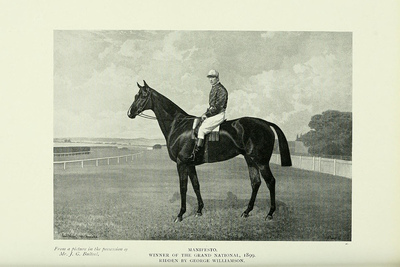
As we’ve mentioned previously, the race dates back to the early 19th century and was founded by William Lynn. At the time, Lynn was a hotelier and had big plans to build a new racecourse in Aintree, which he completed in 1829.
The actual running of the first race is still one that is widely debated today, mainly about where it was. There are some that claim the first races were held between 1836 and 1838 at Maghull and not Aintree, though these may in fact have been held at Aintree and could be classed as the first Grand Nationals.
By 1838 the race had started to really take off and Liverpool was a city that was buzzing on the back of its success. They were able to attract some of the top horses of the time and was often seen as a hot bed for the rich to purchase up and coming horses to add to their stables. The first official running of the Grand National came about in 1839 and has since been a staple at the Aintree racecourse.
The popularity of the race is one that is unprecedented in the industry. There is no other horse race in the world that attracts as many people from outside the sport as the Grand National does. The majority of the crowd may not watch another race all year, but when the Grand National is on, they are glued to their screens.
These days the history, the glamour and the money surrounding the race is an easy sell, but the early attraction wasn’t so clear, given that there were so many high-class races around. We think that the ability for the underdogs to prosper against more established names may be a key factor in the race’s interest. Over the 4m 2½f distance and 30 obstacles they need to jump, literally anything can happen and pretty much everything has happened.
The numbers involved are quite staggering. Over 600 million people around the world will be tuning in and with it, over £250million worth of bets wagered across the UK alone. This makes it the biggest betting day of the year and can literally be make or break for some bookmakers’ entire season.
The prizemoney on offer currently is £1,000,000, with £500,000 going to the winner. Interestingly, this is still some way behind the richest horse race in the world, the Saudi Cup, paying out a massive £15,000,000 to contestants. But, it is the richest steeplechase in the world.
Vincent O’Brien
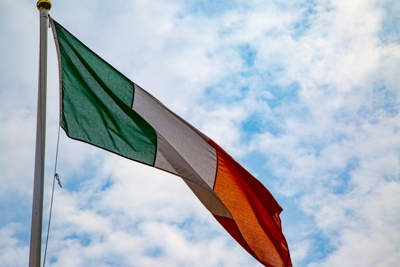
Vincent O’Brien has played a crucial role in the Grand National’s history. He won the race three times in three consecutive years between 1953 and 1955. Most impressively, all three wins came on three different horses; Early Mist, Royal Tan and Quare Times.
But, the Irishman was more than just a Grand National hero, he had trained dozens of winners running around the world in a career spanning over 50 years within the industry. He was voted the greatest National hunt trainer of the twentieth Century and was later voted the same award for the flat section as well. This highlighted O’Brien’s dominance and success over the years, winning pretty much every major race in the UK, Ireland, France and even the US in the process.
Devon Loch
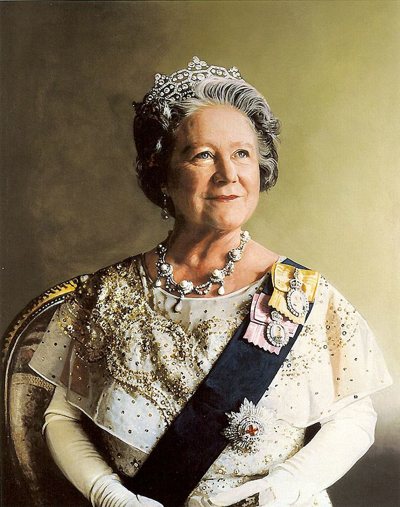
Devon Loch is one of the most famous horses to have taken part in the Grand National, but for all the wrong reasons.
The horse was owned by prolific racing supporter Queen Elizabeth The Queen Mother and was trained by Peter Cazalet.
Ridden by would-be crime novelist Dick Francis, Devon Lock was leading the 1956 Grand National when, for some reason, just a few furlongs from home, the horse jumped into the air and landed flat on its belly, handing the race to E.S.B. and jockey Dave Dick.
The horse couldn’t continue after the fall and was eventually passed by all 9 remaining finishers.
The cause of the phantom jump has been the topic of much speculation over the years with theories ranging from a shadow the track to the gelding suffering a minor heart attack.
One of the things that many people aren’t aware of is that Devon Loch was actually on course to set a new record time in the race, with winner E.S.B finishing just a few hundredths of a second outside of it.
Red Rum
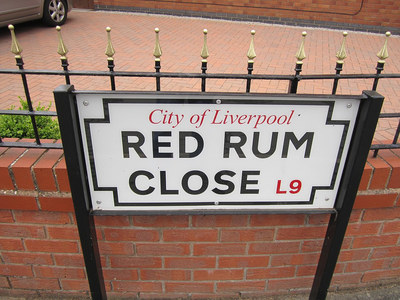
It’s hard to think of any other horse other than Red Rum when you think of the Grand National. A lot of horses will go down as legends of the sport for winning major titles, but no other horses has been able to win the hardest and most prestigious steeplechase in the world on three separate occasion. The horse, trained by Ginger McCain, is a bit of a freak in that regard. His victories came in 1973, 1974 and 1977. Many people thought to win it back to back races was an impressive feat, but to go away and come back three years after his second win and do it all again is nothing short of miraculous.
Red Rum was initially bought for the meagre sum of £420 in 1966, but it was McCain who saw the potential and bought it for £6,300. But, just a few days after the purchase it was McCain who noticed that Red Rum was actually lame. He decided to try a then new technique of training the horse in sea water to combat this, which clearly worked a charm.
Whilst McCain was able to pick up the plaudits at the time of the win, he wasn’t to see success in the National again until victory with Amberleigh House in the 2004 race. This would give the trainer his fourth win and put him tied at the top with the most ever wins in the Grand National.
The Race that Never Was
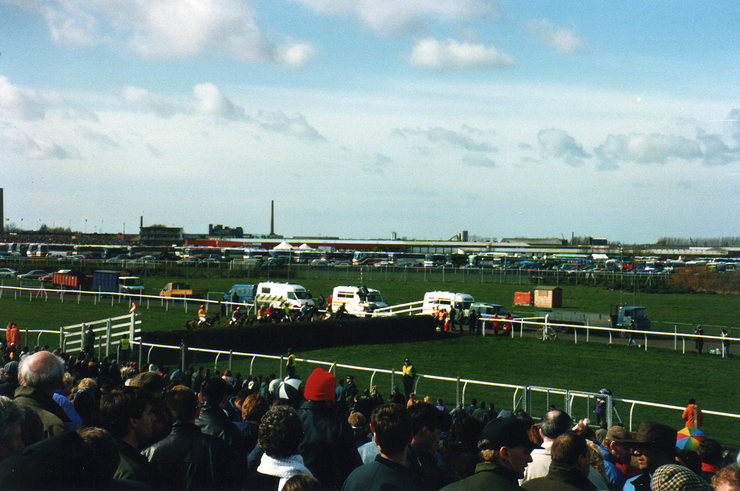
In 1993 one of the most infamous Grand Nationals in history took place. The race went off as a false start, but due to a communication breakdown throughout the track and the fact that some riders were ignoring the frantically waved flags thinking that they were protestors, 30 out of the 39 ran the full race in its entirety.
As only seven of the horses finished the race, it was deemed void. Although interestingly, the race time by Esha Ness was the second fastest in history.
Anthony McCoy and Don’t Push It
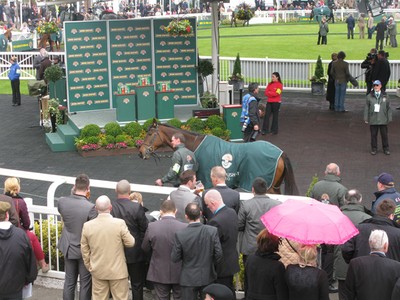
A P McCoy is widely regarded as one of the best jump jockeys of his era. He’s won pretty much everything there is to win in the sport, becoming Champion Jockey an incredible twenty times in a row.
But, there had been one thing missing from his collection, and that was riding a Grand National winner. He’d ridden in 15 different races before he picked up his first win in 2010 on Don’t Push It.
After the race McCoy described the win as a relief and went on to win the 2010 Sports Personality of the Year award for his efforts. He was knighted in 2016 following his retirement at the end of the 2014/15 season.